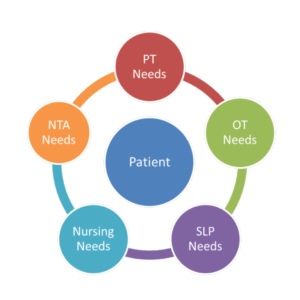Industry leaders weigh in on President Obama’s FY2014 budget proposal
There is good news and bad news contained in President Obama’s proposed $3.8 trillion budget for fiscal 2014, and while Congress will not approve it as presented, some of the provisions objected to by much of the long-term care(LTC) industry eventually could become reality as Congress seeks cuts in federal entitlement programs.
The good news? For physicians who serve the industry and who depend upon Medicare for much of their income, there is growing momentum to repeal the Sustainable Growth Rate (SGR) formula that has driven providers crazy over the past decade. President Obama’s budget plan adds to that momentum.
But, Medicare would be cut by $370 billion over 10 years, with much of that coming from hospitals, drug companies, nursing homes and high-income seniors who will be asked to pay higher premiums.
The proposed budget would:
- Include $79 billion in Medicare cuts over 10 years by reducing marketbasket updates by 1.1 percent for post-acute care providers. That cut would be on top of a reduction in the annual payment update under the Affordable Care Act (ACA).
- Reduce Medicare payments for bad debt payments starting in 2014 from the current 65 percent to 25 percent over a three-year period.
- Reduce Medicare payments for skilled nursing facilities (SNFs) with high rates of rehospitalizations, by up to 3 percent beginning in 2017.
- Require new Medicare beneficiaries to make $100 copayments for home health care services starting in 2017 for non-post acute home health services.
- Continue implementation of the ACA requirement that the Centers for Medicare & Medicaid Services (CMS) develop a value-based purchasing program for SNFs and home health.
- Continue emphasis on reducing waste, fraud and abuse.
- Continue work on implementing ACA demonstration programs and initiatives, including innovation grants, accountable care organizations, bundled payments and home- and community-based LTC alternatives.
The Alliance for Quality Nursing Home Care president Alan G. Rosenbloom expressed “deep alarm,” saying the proposal would threaten workforce stability, patient care and the ability to sustain successful rehabilitative care outcomes.
Rosenbloom contended that 85 percent of SNF bad debt is unrecoverable because it stems from Medicaid’s “inability or unwillingness” to pay Medicare copayments for dual eligible patients.
Mark Parkinson, president and CEO of the American Health Care Association and the National Center for Assisted Living (AHCA/NCAL), pointed out that in the last several years the industry has faced billions in Medicare cuts combined with severe underfunding from Medicaid. “Unfortunately, the Medicare reductions proposed in the President’s 2014 budget only put added strain on our sector and risk jeopardizing access to care for millions,” he said. “These proposed reductions will not solve the underlying structural problems with our nation’s budget.”
Parkinson acknowledged the need to fix the long-term financial problems involved with Medicaid and Medicare, and said the profession “is ready with solutions that don’t simply rely on further cuts, but instead look at broad, structural changes that benefit both the taxpayer and our nation’s fail elderly.”
LeadingAge issued a statement saying it appreciated the “balanced approach to funding so that seniors and people with disabilities can remain independent and receive the services they need in their communities.” Noting that the issues raised by the White House plan “likely will come to the forefront” of discussions this summer as lawmakers wrestle with a budget plan and face another debt ceiling deadline, LeadingAge also applauded the inclusion of funding for development of affordable supportive senior housing.
Regarding the SGR, the budget plan would freeze physician Medicare payments at their current level rather than allowing the SGR to trigger the 24.4 percent cut that is scheduled to take place January 1, 2014, unless Congress acts. There would be several years of fee-for-service “payment stability” to give CMS time to develop various payment models from which physicians could choose. The goal is to “provide predictable payments that incentivize quality and efficiency in a fiscally responsible way,” the budget plan states.
In February, the Congressional Budget Office (CBO) cut in nearly half the estimated cost that would be incurred by eliminating the SGR, encouraging those who seek reform to move forward. According to that report, lower than expected growth in Medicare physician spending has slashed the estimated 10-year cost of repealing the SGR formula to $138 billion, down from last year’s $244 billion projection.
The budget proposal released by Senate Democrats for FY2014 assumes SGR repeal and the scheduled percent physician pay. It also assumes rollback of the 2 percent Medicare rate cut imposed by sequestration.
In the House of Representatives, the budget proposed by Budget Committee Chairman Paul Ryan (R-WI) would establish a “reserve fund” that would allow Congress to repeal the cuts required by the SGR in a deficit-neutral manner. It does not specify how policymakers would offset the cost, but if Congress fails to find a solution, the Ryan plan assumes the SGR cuts will take effect.
Furthering the support for repealing SGR was the Medicare Payment Advisory Commission (MedPAC), which said in its March report to Congress that the lower CBO estimate underscores the need for action now
Meanwhile, Rep. Kevin Brady (R-TX), chairman of the House Ways and Means Health Subcommittee, says he wants to work with the House Energy and Commerce Committee, which also has jurisdiction, to repeal the SGR. In a press release, the Congressman said he supports permanently repealing the formula and replacing it with a reliable physician reimbursement formula that “rewards quality rather than volume of procedures and tests.”
In February, Reps. Allyson Schwartz (D-PA) and Joe Heck, DO (R-NV) introduced the Medicare Physician Payment Innovation Act, which would:
- Permanently repeal the SGR formula.
- Provide annual positive payment updates for all physicians for four years.
- Ensure access to preventive care, care coordination, and primary care services through increased payment updates for those services.
- Aggressively test and evaluate new payment and delivery models.
- Identify payment models to provide options for providers across medical specialties, practice types and geographic regions.
- Stabilize payment rates for providers who demonstrate a commitment to quality and efficiency within a fee-for-
Bob Gatty has covered governmental developments for the trade and business press for more than 30 years. He is founder and president of G-Net Strategic Communications, Sykesville, Md.

Robert Gatty has more than 40 years of experience in journalism, politics and business communications and is the founder and president of G-Net Strategic Communications based in Myrtle Beach, South Carolina. He can be reached at bob@gattyedits.com.
Related Articles
Topics: Accountable Care Organizations (ACOs) , Advocacy , Articles , Executive Leadership , Medicare/Medicaid , Regulatory Compliance









